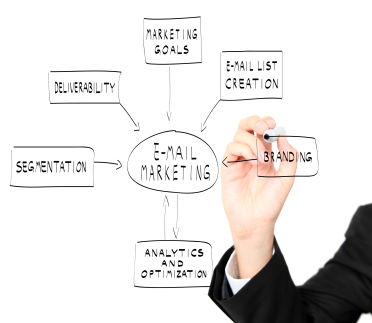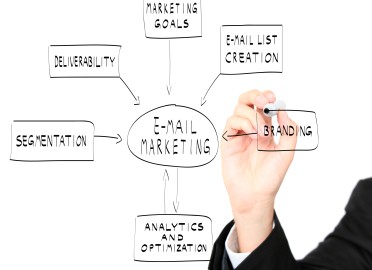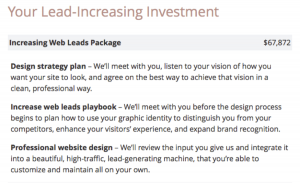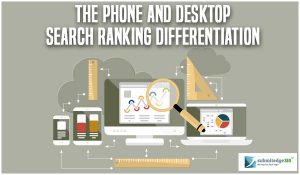The significance of personalization is something nearly 94% of social marketers can agree on. But only a small sliver of businesses successfully take advantage of it, and vast amounts of data is left untapped. A whopping 40% of businesses pass up on creating a meaningful connection using segmentation and personalization.
 But first off, let’s figure out what we are talking about when we say personalization. Personalization is tailoring services, goods, content, and other facets of an association’s brand to be more appealing and significant to a specific individual.
But first off, let’s figure out what we are talking about when we say personalization. Personalization is tailoring services, goods, content, and other facets of an association’s brand to be more appealing and significant to a specific individual.
But personalization doesn’t simply mean swapping a name into the subject line of an email. The point of personalization is to become more relevant to customers. You have just a few seconds to grab the attention of a potential consumer. Something drastic needs to occur to assure the consumer stays interested. Personalization is a key factor to successfully making your information meaningful and intriguing.
At the heart of personalization lies big data, and using big data harvests tremendous results. Organizations that devoted their time to analytics encountered a 49% increase in revenue growth versus the organizations that did not invest in analytics at all. And the organizations dedicated to using analytics also experienced almost 30% higher ROI than those that did not. But most importantly, tapping into your big data and using it to create a personalized experience – it improves the consumers’ experience.
Customers are transforming with big data, expectations are increasing when it comes to interactions with businesses. Today’s consumers crave convenience and are becoming increasingly comfortable with sifting through data and creating an environment that is more relevant to them. By offering personalization, you encourage the fostering of a trusting relationship with a happy consumer. And the effects of personalization expand past impulsive responses to your call-to-action; personalization can nurture and cultivate loyalty.
If it’s so important, why do so few of us really make full use of it?
Source: http://resources.monetate.com/ios/images/profile/real_images/55331420icon55331420.pdf
Most people simply say, “We don’t know where to start!” So we’ll begin here…
How to Implement Personalization Tactics Instantly.
Today we are going to concentrate on creating a strong and effective personalized e-newsletter. Because to this day, email is still the King of consumer engagement and has the highest return on investment out of mobile, social, display and search. Email also helps generate higher ROI and when you don’t use email – you’re leaving a possible 32% of revenue on the table. Source: http://responsys.com/
Draw folks in, starting with the subject line
Someone is checking their overflowing inbox and, with a fantastic first impression, you must convince them that they are eager to hear the news you bring. Using data you’ve collected, you can create subject lines that are more relevant to them. For example, once learning about gender and marriage status you could build off of that knowledge. In the inbox, you are competing for the attention that they share with family and friends. To capture those fleeting moments of intrigue, here are some methods to creating compelling headlines:
People love secrets. Share an inside secret tip and trick that can benefit your readers. If the individual is a married male with younger children you could say:
- The Secrets to Convincing Your Spouse
- Little Known Ways to Clean A House in Less Than 10 Minutes
Kicking off a headline with “Everyone Already Knows” or “Who Else Wants” implies that there is already a popular belief. This formula works like a charm because people want to be in on the knowhow. Remember specificity is also key to creating a great subject line, an easy way to immediately implement this tactic would be to name a precise number.
- Who Else Wants a Vacation to California Under $ 346?
- What Everyone Should Know About Mistakes that Lead to Blogging Failure
When emailing – use a real name, not the company.
Instead of sending your email from the Company name, use one of the names of your marketing team. Because what’s less personal than a Company name? And if you really want to amp up the personalization, add a picture and signature at the end of the email. This way, the reader can see that a real, living, breathing person constructed a message.
Casual Greetings and Names
“Hey” was the infamous greeting of Obamas marketing campaign and its success. Use conversation lingo and use the recipients first name.
Will they keep reading after the first sentence?
Will recipients want to learn more once they’ve read the first sentence? Remember, images are a great way of summarizing a story while remaining interesting and tangible. Short-and-sweet, nice-and-brief is the way to go. Before jumping into your e-newsletter, think about the purpose and what you’d like to achieve.
The top of your e-newsletter is the most important section. This slice of your email is what will attract or deter readers. Add personalized images and stories that are relevant to the recipient. Doing this can help build trust, and this trust will translate into convincing the reader that you’re a trustworthy source of knowledge.
Tell them a story, and maybe they’ll share one back
People love to hear stories, so share your personal stories with them. And afterwards encourage conversation by asking for feedback. Ask your readers to share their stories and use this to build your community. Source: http://responsys.com/
Drive recipients to jump into action with segmentation and targeted links
Use readable URLS to encourage recognition of your brand. For each call-to-action post, generate a link that connects to a page with a matching title and images. Don’t send your recipients to the home page. The home page is often an unrelated link and if your reader ends up in an unrelated link – you’ll quickly lose their attention. When a recipient clicks a link, it’s the equivalent of them raising their hand and vocalizing, “Hey, that’s pretty cool. I’d like to learn more.” The homepage is created for the broadest of spectrums. A successful e-newsletter will help their readers by segmenting the e-newsletters links to segmented sections that will appeal to them.
Attentive.ly is a a social marketing platform that drives engagement with your digital campaigns by turning your existing audience into advocates.
(226)






